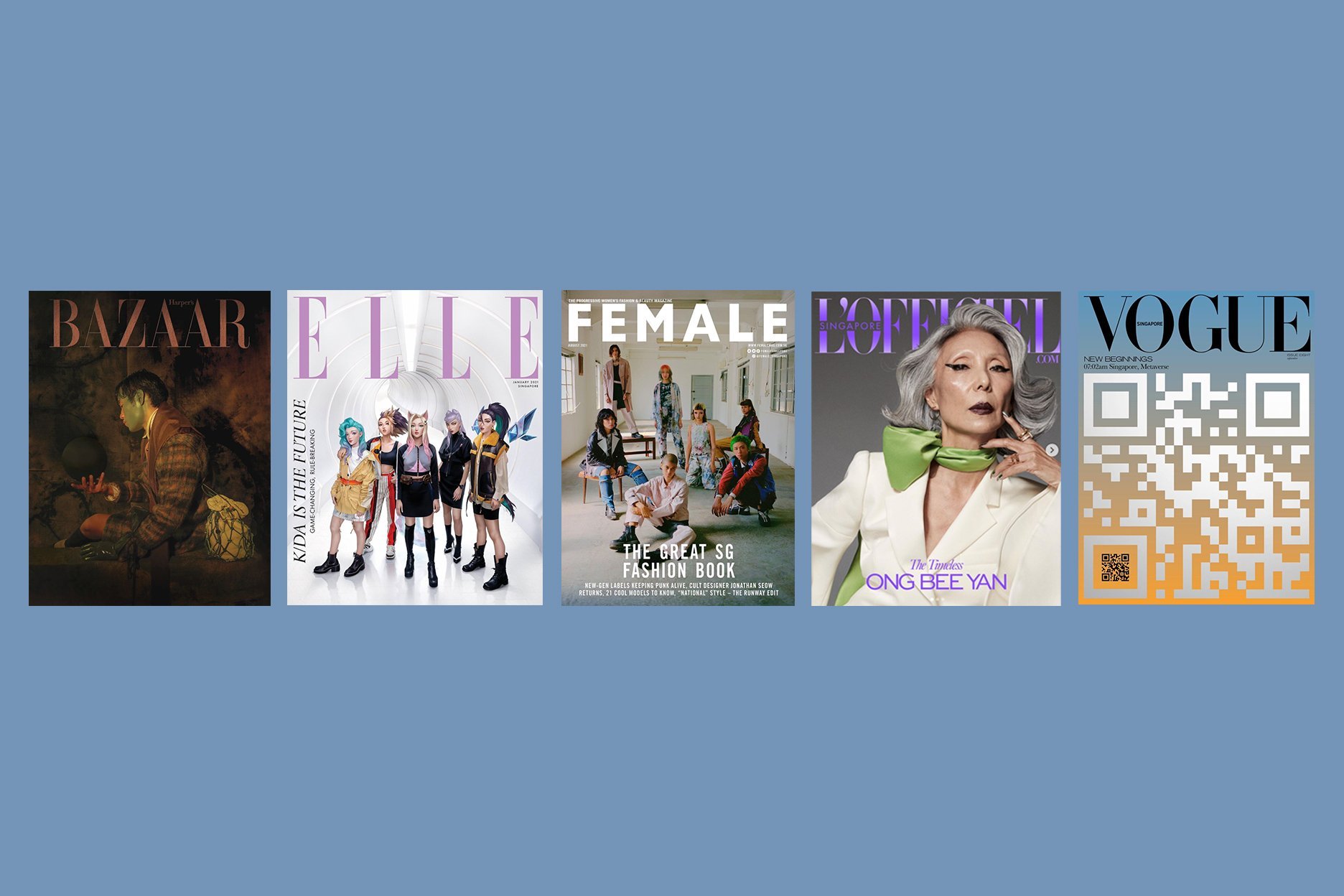My Own Words: Fiona McKay
‘Sri Journal’ and Indonesian design, art and culture
By Fiona McKay
Portrait of Fiona McKay.
Having grown up with an Indonesian-Chinese mother and Scottish father, I have always been proud of my roots. Yet, after working for nearly eight years as a curator, exploring my heritage within my practice has been a way for me to finally “come home”.
Fiona McKay with her mother in Sumatra, 1984.
Originally born in Singapore, I grew up in Medan, Indonesia, my mum’s hometown, then North-East Aceh, before moving to the North-East of Scotland when I was six years old. Even after moving to the United Kingdom (UK), I felt a strong connection with Indonesia growing up with my mother’s restaurant, Spice Islands, Scotland’s only Indonesian restaurant. It was however, my last trip to Indonesia in 2018 which reignited my passion for the country. We visited a cross-section of the different islands which highlighted the incredible contrasts between the landscapes, food and culture. In particular, learning more about batik in Yogyakarta, Java and then Ulos Batak in Sumatra revived my life-long fascination with Indonesian textiles and craftsmanship.
Batik craftswomen, Yogyakarta 2018.
The first time I saw how my heritage could play a strong role within my work was in 2019, when I was commissioned to curate an event celebrating Indonesian culture. Coinciding with The London Book Fair, it was a chance to weave together different parts of the Indonesian cultural experience and show how rich and expansive the creative scene is. It felt new and exciting to meet and work with different household names within Indonesian design and arts; like fashion designer Didiet Maulana, chef Petty Elliott, as well as artists Sinta Tantra and Khairani Bairokka. At the same time, it also felt familiar and I saw them as a sort of an extended family.
‘Islands of the Imagination” An Indonesian Cultural Late’, London 2019. Image copyright: Agnes Sanvito.
Covid-19, Black Lives Matter and Anti-Asian Hate
When the global pandemic took hold the following year, it had a particular impact on my field. My work as a curator was forced to be cut short and then I found out that I was expecting a child. Although thrilled about the news, I was now considered “vulnerable” within the context of Covid-19 and had to restrict any social contact for months. Being unable to see members of my Indonesian family in London for nearly a year created a distance with that part of my culture. Like so many others, I felt isolated and without purpose. I found solace in the digital space, as a way to keep those social connections.
The Black Lives Matter movement later that year became a much needed catalyst to challenge colonialist tropes within multiple areas of our society. Sadly, it has taken further acts of violence towards Asian communities, for us to do the same with the East or Southeast Asian (ESEA) culture with the recent Anti-Asian Hate Movement. This triggered a long overdue conversation around the history of ESEA exoctisation by the West. However, the solidarity we have seen between different communities, particularly on social media, has been inspiring and I hope this sets a precedent for future generations.
Sri Journal
Although cultural appropriation has been in the mainstream consciousness within the last few years, I could still see a disconnect when referencing design and appreciating its origins within the media. There is also a gradual movement towards decolonising many aspects of our society, yet visual culture with non-Western origins still tends to be pigeonholed and generalised; often deemed as “exotic”, “ethnic” or “oriental”.
Sri Journal logo.
Relating all this to my own heritage, there has always been a distinct lack of awareness of Indonesia in the UK, yet the country’s influence can be seen everywhere from food to interior design. Rattan furniture, for example, is still part of an exoticised narrative, often labelled as “tribal”, without showing its rich cultural history. This has highlighted an opportunity to create a space for voices within the Indonesian creative community and reveal the connections between traditional and modern to give context, history and meaning, as well as show the country’s rich diversity, to the rest of the world.
Inspired by the name my mother gave me, in 2020, I created ‘Sri Journal’, a curated edit of contemporary Indonesian design, art and culture. Acknowledging that I live in the UK, Sri Journal focuses on the influence of Indonesian culture globally and what Indonesian creatives are doing around the world.
Framed by my time working as a curator at the Centre for Sustainable Fashion in London, ecological concerns are also an integral part of Sri Journal’s focus. I am also keen to change the discourse and language around design originating from Indonesia, moving away from the generalisation of anything non-western.
Batik craftswomen, Yogyakarta 2018.
From a personal level, Sri Journal is also a way I can feel a connection to a place so far away. Similarly, my first set of interviewees, although all based in Europe, still reflect upon their Indonesian heritage through their work, whether it be through food, performance or visual arts.
Speaking with chef and food writer Lara Lee, it was such a joy to revisit so many of the dishes from my childhood. Through the lens of exploring her own heritage, Lee explores the country’s expansive food culture through her book, ‘Coconut & Sambal’. Having lived in Australia then London, she brings her own twist on traditional recipes, without compromising their integrity.
Based in The Netherlands, Gallery Lukisan specialises in Indonesian and South East contemporary art. Having first worked with them in 2019, it was exciting to find a gallery in Europe which was committed to raising the profile of the country’s artists globally.
It was also incredibly inspiring to speak with two of my favourite artists, both based in London and who reflect upon how their Indonesian heritage informs their practice. The work of Minang-Javanese writer, artist and researcher Dr Khairani Barokka, centres around disability justice as anti-colonial praxis. Central to the work of artist Sinta Tantra, who is known for her colourful geometric paintings and site-specific murals, is her Balinese identity within the post-colonial context.
Indonesia’s impact on the creative world has been huge, and it deserves to get the credit that it is due. I hope I can help shine the spotlight towards it.
Fiona McKay is a London-based curator and writer. She was born in Singapore to an Indonesian-Chinese mother and Scottish father. With a background in art history, fashion and architecture, Fiona co-founded curatorial studio, White Line Projects in 2013-2020, which specialised in physical and digital exhibitions on design, fashion and the visual arts for a wide range of organisations and brands. In 2020, Fiona founded ‘Sri Journal’, a curated edit of contemporary Indonesian design, art and culture.
















